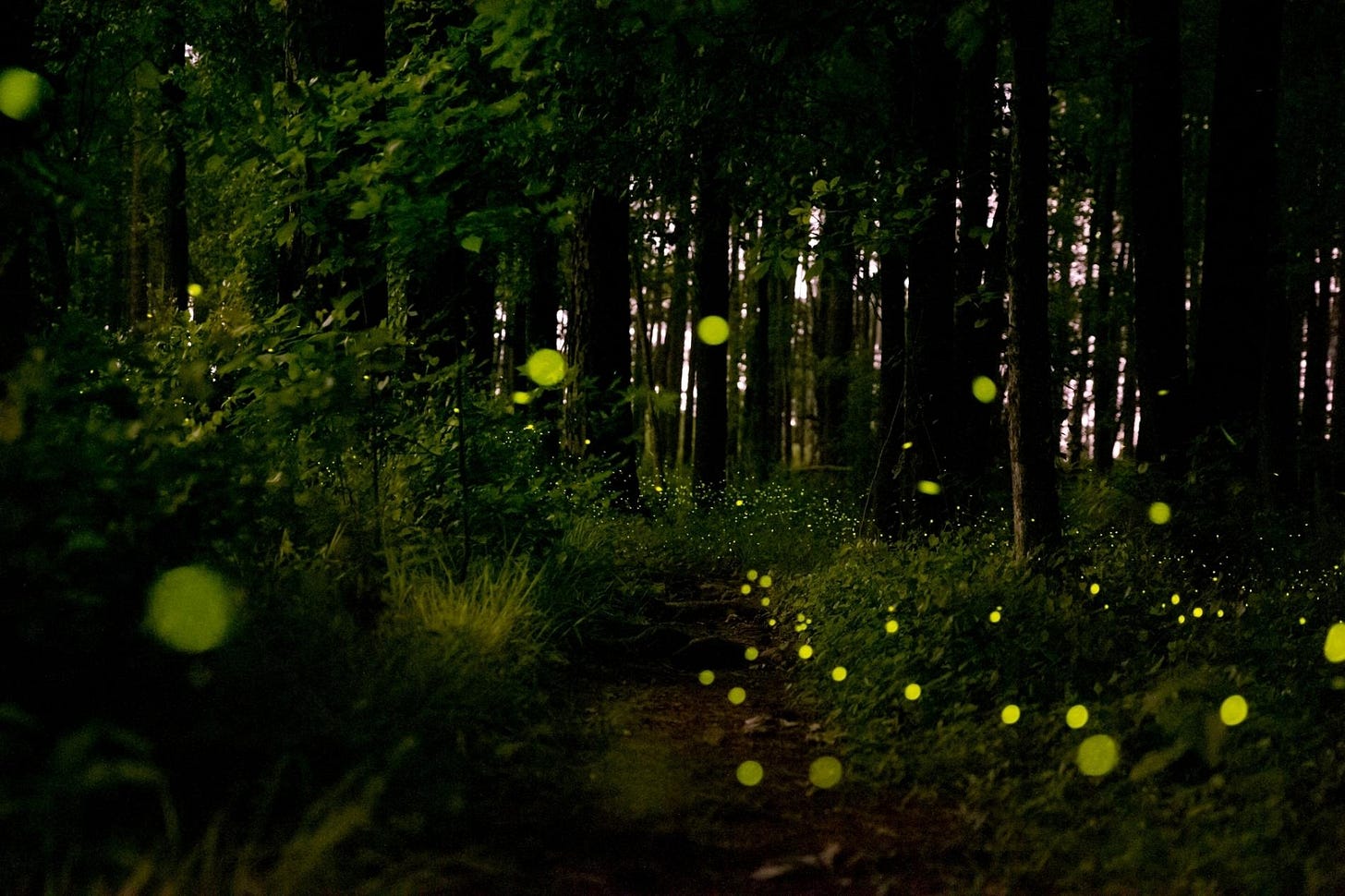Notes #5:Uncertain times
Firefly and Complex systems science

Complex systems science allows us to see new paths forward
Think of hundreds of fireflies flashing together on a summer’s evening. How does that happen? A firefly’s decision to flash is thought to depend on the flashing of its neighbours. Depending on the copying rule they’re using, this coordination causes the group to synchronise in either a ‘bursty’ or ‘snappy’ fashion. In her book Patterns of Culture (1934), the anthropologist Ruth Benedict argued that each part of a social system depends on its other parts in circuitous ways. Not only are such systems nonlinear – the whole is more than the sum of the parts – but the behaviour of the parts themselves depends on the behaviour of the whole.
Like swarms of fireflies, all human societies are collective and coupled. Collective, meaning it is our combined behaviour that gives rise to society-wide effects. Coupled, in that our perceptions and behaviour depend on the perceptions and behaviour of others, and on the social and economic structures we collectively build. As consumers, we note a shortage of toilet paper at the supermarket, so we hoard it, and then milk, eggs and flour, too. We see our neighbours wearing masks, so put on a mask as well. Traders in markets panic upon perceiving a downward trend, follow the herd and, to echo Márquez, end up causing the precipitous drop they fear.

